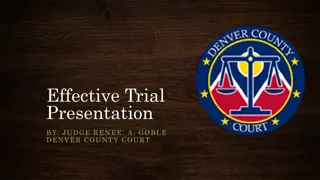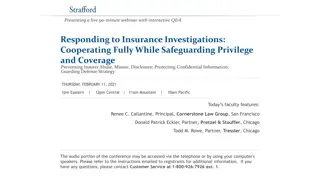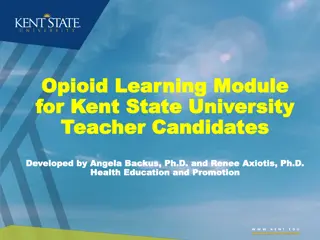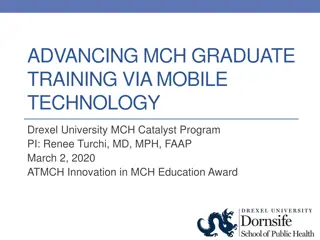Practice Test for Developing Integrity in 4th Grade
This practice test by Renee Cook from Brownsburg, IN, focuses on developing integrity in 4th-grade students. The test includes scenarios where students have to choose the best action reflecting integrity. The test is designed like a dartboard, aiming to find the "bull's-eye" answer that aligns most closely with the concept of integrity. Students are presented with various situations and asked to identify the character exemplifying integrity. Through multiple-choice questions, students learn to make ethical choices even when no one is watching, a key aspect of integrity.
Download Presentation

Please find below an Image/Link to download the presentation.
The content on the website is provided AS IS for your information and personal use only. It may not be sold, licensed, or shared on other websites without obtaining consent from the author.If you encounter any issues during the download, it is possible that the publisher has removed the file from their server.
You are allowed to download the files provided on this website for personal or commercial use, subject to the condition that they are used lawfully. All files are the property of their respective owners.
The content on the website is provided AS IS for your information and personal use only. It may not be sold, licensed, or shared on other websites without obtaining consent from the author.
E N D
Presentation Transcript
4th Grade Practice By Renee Cook, Brownsburg IN Bull s-eye Answer Objective: You will be able to determine the BEST Answer
Test makers design a test like a Dart Board I DO! Trickster This answer is very close but it is not THE BEST answer. CLOSER BUT OFF This answer is from the text, but doesn t answer the question WAY OFF ANSWER This answer is not true, not relevant and not even close to what the question is looking for BULL S-EYE The BEST Answer
I DO! Which student is best using the character Which student is best using the character trait integrity? trait integrity? Integrity means doing the right thing even when no one is watching. A.) Kelsey runs to the line to be first for lunch. B.) Carrie stands quietly in the line and her teacher gives her a thumbs up. C.) Peggy lets her three best friends go in front of her on the way to lunch then quietly grabs a tray and goes through the line. D.) Sandy picks up a piece of trash as she is headed to the line then stands quietly in the line.
A.) Kelsey runs to the line to be first for lunch. B.) Carrie stands quietly in the line and her teacher gives her a thumbs up. C.) Peggy lets her three best friends go in front of her on the way to lunch then quietly grabs a tray and goes through the line. D.) Sandy picks up a piece of trash as she is headed to the line then stands quietly in the line. I DO! CLOSER BUT OFF This answer is from the text, but doesn t answer the question Trickster This answer is very close but it is not THE BEST answer. C C D D B B WAY OFF ANSWER This answer is not true, not relevant and not even close to what the question is looking for A A BULL S-EYE The BEST Answer
Now You Try! Cardinal Which character from a book shows the most integrity? A.) In the book Anna of Rainbow Valley, Anna helps a lost pig find in way back to the right farm on her way home from school. B.) In The Three Little Pigs, Goldilocks sneaks into a bears cottage and breaks their chairs. C.) Mrs. Cook when she sneaks into Mr. G s room and eats his candy. D.) In Cinderella, Cinderella cleans the whole house when her stepsisters make her to do all the chores. WE DO!
WE DO! Cardinal Which character from a book shows the most integrity? A.) In the book Anna of Rainbow Valley, Anna helps a lost pig find in way back to the right farm on her way home from school. B.) In The Three Little Pigs, Goldilocks sneaks into a bears cottage and breaks their chairs. C.) Mrs. Cook when she sneaks into Mr. G s room and eats his candy. D.) In Cinderella, Cinderella cleans the whole house when her stepsisters make her to do all the chores. CLOSER BUT OFF This answer is from the text, but doesn t answer the question Trickster This answer is very close but it is not THE BEST answer. B B A A D D WAY OFF ANSWER This answer is not true, not relevant and not even close to what the question is looking for C C BULL S-EYE The BEST Answer
4th Grade Bull s-eye Answer Objective: You will be able to determine the BEST Answer.
Are elementary school children too young to have cellphones? More schools are letting students have cellphones. And it's not just high schools and middle schools. Many elementary schools are considering allowing students to bring phones to school. Every School Has A Different Rule Schools have different rules for cellphones. Some students are allowed to bring cellphones. But they can only use them in an emergency. Some schools require families ask permission for their child to bring a phone. Some parents want young students to carry cellphones. They can stay in touch for safety or planning. Other parents worry that cellphones could be distracting. They also worry that cellphones would cause problems. Not all families have enough money to buy them. Catherine Carpela is a teacher in Maryland. She doesn't like the idea. She says teachers would have to monitor cellphone use. She wants to spend that time teaching. Making Sure Students Use Phones In The Right Way Many kids already bring phones to school. School leaders know this. They think the rule would make sure students use them appropriately. Sherwin Collette helps schools with technology. He said the rule change is in line with a bigger idea. Cellphones could add to other technology being used in the classroom. They could even help students learn. Amanda Lenhart studies teenagers and technology. She said it's common for kids to get a cellphone around age 10. "What age should a child have a cellphone?" Lenhart said. It can be a hard choice for parents to make.
Are elementary school children too young to have cellphones? More schools are letting students have cellphones. And it's not just high schools and middle schools. Many elementary schools are considering allowing students to bring phones to school. Every School Has A Different Rule Schools have different rules for cellphones. Some students are allowed to bring cellphones. But they can only use them in an emergency. Some schools require families ask permission for their child to bring a phone. Some parents want young students to carry cellphones. They can stay in touch for safety or planning. Other parents worry that cellphones could be distracting. They also worry that cellphones would cause problems. Not all families have enough money to buy them. Catherine Carpela is a teacher in Maryland. She doesn't like the idea. She says teachers would have to monitor cellphone use. She wants to spend that time teaching. Making Sure Students Use Phones In The Right Way Many kids already bring phones to school. School leaders know this. They think the rule would make sure students use them appropriately. Sherwin Collette helps schools with technology. He said the rule change is in line with a bigger idea. Cellphones could add to other technology being used in the classroom. They could even help students learn. Amanda Lenhart studies teenagers and technology. She said it's common for kids to get a cellphone around age 10. "What age should a child have a cellphone?" Lenhart said. It can be a hard choice for parents to make. 1 Part A What is the viewpoint of the author? A) There are benefits and challenges of having cell phones in schools. B) Cell phones do not belong in schools. C) Cell phones benefit students and families. D)Cell phones benefit high school students, but not elementary students.
Are elementary school children too young to have cellphones? 1 Part A What is the viewpoint of the author? A) There are benefits and challenges of having cell phones in schools. B) Cell phones do not belong in schools. C) Cell phones benefit students and families. D)Cell phones benefit high school students, but not elementary students. B BA A C C D D
1 Part A What is the viewpoint of the author? A)There are benefits and challenges of having cell phones in schools. B) Cell phones do not belong in schools. C) Cell phones benefit students and families. D)Cell phones benefit high school students, but not elementary students. 1 Part B Which statement from the text best proves your answer? A)More schools are letting students have cellphones. And it's not just high schools and middle schools. B)Some parents want young students to carry cellphones. They can stay in touch for safety or planning. Other parents worry that cellphones could be distracting. C)Catherine Carpela is a teacher in Maryland. She doesn't like the idea of phones in schools. D)Many kids already bring phones to school. School leaders know this.
1 Part B Which statement from the text best proves your answer? A) More schools are letting students have cellphones. And it's not just high schools and middle schools. B) Some parents want young students to carry cellphones. They can stay in touch for safety or planning. Other parents worry that cellphones could be distracting. C) Catherine Carpela is a teacher in Maryland. She doesn't like the idea of phones in school. D) Many kids already bring phones to school. School leaders know this. Are elementary school children too young to have cellphones? A A B B C C D D
2 Part A Read the section Making Sure Students Use Phones in the Right Way. What is the main idea of this section? A) There are no challenges of having cell phones in school. B) Cell phones in schools have many drawbacks. C) If used correctly, cell phones could benefit students in school. D) Deciding when to get a cell phone for your child is a difficult choice for parents. Are elementary school children too young to have cellphones? More schools are letting students have cellphones. And it's not just high schools and middle schools. Many elementary schools are considering allowing students to bring phones to school. Every School Has A Different Rule Schools have different rules for cellphones. Some students are allowed to bring cellphones. But they can only use them in an emergency. Some schools require families ask permission for their child to bring a phone. Some parents want young students to carry cellphones. They can stay in touch for safety or planning. Other parents worry that cellphones could be distracting. They also worry that cellphones would cause problems. Not all families have enough money to buy them. Catherine Carpela is a teacher in Maryland. She doesn't like the idea. She says teachers would have to monitor cellphone use. She wants to spend that time teaching. Making Sure Students Use Phones In The Right Way Many kids already bring phones to school. School leaders know this. They think the rule would make sure students use them appropriately. Sherwin Collette helps schools with technology. He said the rule change is in line with a bigger idea. Cellphones could add to other technology being used in the classroom. They could even help students learn. Amanda Lenhart studies teenagers and technology. She said it's common for kids to get a cellphone around age 10. "What age should a child have a cellphone?" Lenhart said. It can be a hard choice for parents to make.
2 Part A Read the section Making Sure Students Use Phones in the Right Way. What is the main idea of this section? A) There are no challenges of having cell phones in school. B) Cell phones in schools have many drawbacks. C) If used correctly, cell phones could benefit students in school. D) Deciding when to get a cell phone for your child is a difficult choice for parents. Are elementary school children too young to have cellphones? B B C C A A D D
2 Part A Read the section Making Sure Students Use Phones in the Right Way. What is the main idea of this section? A) There are no challenges of having cell phones in school. B) Cell phones in schools have many drawbacks. C) If used correctly, cell phones could benefit students in school. D) Deciding when to get a cell phone for your child is a difficult choice for parents. 2 Part B Which sentence best proves your answer? A)Many kids already bring their phones to school. B)She said it s common for kids to get a cellphone around age 10. C)It can be a hard choice for parents to make. D)Cellphones could add to other technology being used in the classroom.
2 Part B Which sentence best proves your answer? A)Many kids already bring their phones to school. B)She said it s common for kids to get a cellphone around age 10. C)It can be a hard choice for parents to make. D)Cellphones could add to other technology being used in the classroom. Are elementary school children too young to have cellphones? C C D D A A B B
Are elementary school children too young to have cellphones? 3 What is the best piece of support to prove children should not bring cell phones to school because it will hurt their learning? A) Cell phones could be distracting B) Schools have different rules for cell phones. C) Not all families have enough money to buy them D)They could even help students learn. More schools are letting students have cellphones. And it's not just high schools and middle schools. Many elementary schools are considering allowing students to bring phones to school. Every School Has A Different Rule Schools have different rules for cellphones. Some students are allowed to bring cellphones. But they can only use them in an emergency. Some schools require families ask permission for their child to bring a phone. Some parents want young students to carry cellphones. They can stay in touch for safety or planning. Other parents worry that cellphones could be distracting. They also worry that cellphones would cause problems. Not all families have enough money to buy them. Catherine Carpela is a teacher in Maryland. She doesn't like the idea. She says teachers would have to monitor cellphone use. She wants to spend that time teaching. Making Sure Students Use Phones In The Right Way Many kids already bring phones to school. School leaders know this. They think the rule would make sure students use them appropriately. Sherwin Collette helps schools with technology. He said the rule change is in line with a bigger idea. Cellphones could add to other technology being used in the classroom. They could even help students learn. Amanda Lenhart studies teenagers and technology. She said it's common for kids to get a cellphone around age 10. "What age should a child have a cellphone?" Lenhart said. It can be a hard choice for parents to make.
3 What is the best piece of support to prove children should not bring cell phones to school because it will hurt their learning? A) Cell phones could be distracting B) Schools have different rules for cell phones. C) Not all families have enough money to buy them D)They could even help students learn. Are elementary school children too young to have cellphones? B B A A C C D D























